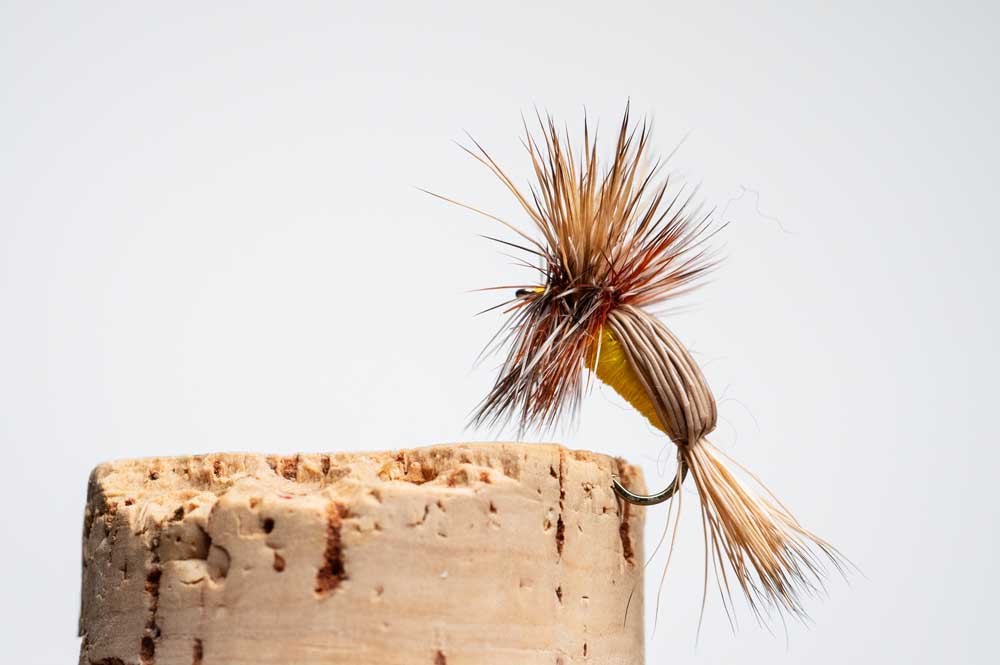Outdoors: Seven days for elk In November
Published 10:19 am Saturday, October 5, 2024

- Yellow Humpy, courtesy Bend Fly Shop.
Seven days for a bull elk. That’s the promise of the general season West Cascade elk hunt in the Santiam, McKenzie, Indigo, Dixon, Evans Creek and Rogue units.
In this era of big-game hunts managed by a lottery system, the West Cascade elk season is unique in that tags are available over the counter up until the day before the season opens. This hunt lends itself to the family camps that have largely disappeared throughout much of the rest of the state. Some of the best hunting can be found on public land and the season is long enough to give a hunter a chance to locate a herd and get eyes on a bull.
Trending
In 1986 the elk hunt was moved to mid-October with the goal to improve bull ratios in the Cascades. In 2021, the Oregon Department of Fish and Wildlife moved elk season back to November in an effort to increase harvest success.
I spoke to Don Whittaker, ungulate species coordinator in Salem, who is tasked with overseeing 550 controlled hunts, 350 of which are for elk, as well as eight or nine general seasons. Whittaker pointed to the low harvest in the West Cascade and said ODFW determined moving the season to November would help a few more hunters tag bulls, but the number of elk taken would not make a big impact.
It was interesting to compare data from 2014 with 2019 and 2023. In 2014, some 2,003 Santiam Unit hunters spent an average of 4.16 days to tie tags on 72 bulls for an average of 115 hunter days per bull and 4 % harvest success. Contrast that with 2019 when 1,478 Santiam hunters harvested 82 bulls for an average of 74 hunter days per bull and 6 % harvest success. In 2023, 1,550 Santiam hunters harvested 115 bulls for an average of 51 hunter days per bull and 8 % harvest.
While the switch to a November season has translated to a “spike” in harvest in the Santiam, the trend is going the other way in the Rogue, where harvest declined from 94 bulls and 5 % harvest in 2014, to 36 bulls and 3 % harvest in 2023. What’s even worse is Rogue Unit hunters are spending 169 hunter days for each bull harvested! The average Rogue Unit hunter spent 4.36 days in the field last year and 97 out of 100 went home without an elk.
Like no other hunt, the West Cascade rifle season offers a chance to learn the land and the habits of an individual herd. That is the kind of education that pays off in the long run with a bull to hang in camp.
Before the season starts, try to isolate a group of animals that might number five cows and a bull and a satellite bull, or 20 cows and a bull and four or five satellite bulls. Dial in to their habits, their feeding areas, their bedding, their rotation cycles and escape routes.
Trending
“The metric is not as much the numbers of days a hunter allocates in a season,” Whittaker said. “Success in the Cascades is determined by how much time a hunter spends getting to know their hunt area.”
With its over-the-counter tags and any-bull harvest, the West Cascade season draws hunters from all over. Some areas, especially in the Santiam and McKenzie, have a lot of hunting pressure, while other sections see few hunters.
This year’s hunt takes place Nov. 9-15. Tags are available until the day before the season opener.
The season is short and the odds are long, but scouting and playing the percentages prepares the Cascades elk hunter for success this year and next.
Fly-tying Corner
Never underestimate the power of a great attractor. The Yellow Humpy is an old standby that doesn’t get as much play these days. Put it back to work in October on mountain lakes and fast-running streams. It floats high enough to run a small dropper beneath it. It’s also a good option in the yellow sally hatch in the spring.
The Yellow Humpy is a great attractor for turbulent water where the fish may not be very selective. Hollow deer hair keeps this fly floating long after other patterns have sunk.
Tie the Humpy on a No. 12-16 dry-fly hook. Tie a tail of deer hair, using hair that is hard and fine so that there will be less flaring of the tail. Wrap your thread to the front of the hook. Tie in a larger, fuller bunch of hair, long enough to form underbody, back, and wings.
Wrap a body of yellow floss and tie off. Pull hair over the body and tie down, flaring the hair to create a wing. Use grizzly and brown hackles, tying them together, in back and front of the wing.








